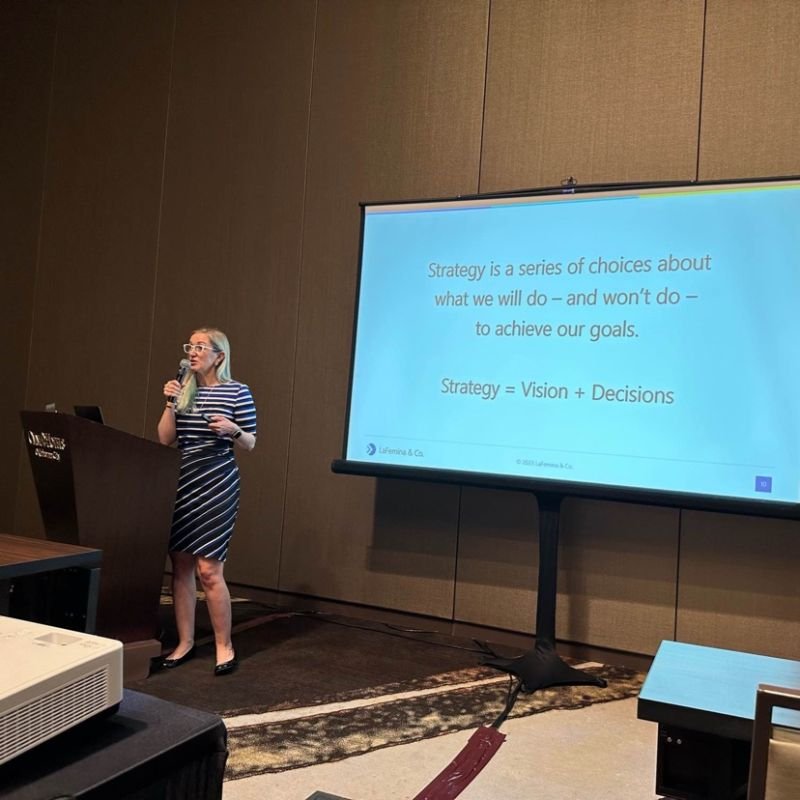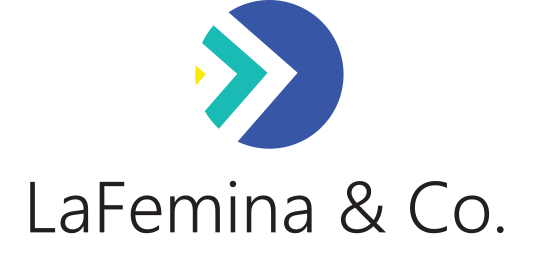Search the blog for insights about nonprofit strategy, leadership, culture, and operations.

3 Leadership Lessons from a Recent Speaking Engagement
Helping nonprofit leaders understand new tools and approaches that can support their strategy, culture, and success never gets old for me.
Last week, I had the pleasure of speaking at the Sarkeys Foundation Southwest Leadership Forum in Oklahoma City.
In two hands-on sessions over two days, I had the opportunity to share with and learn from nonprofit leaders seeking easier, better, more effective ways of working.
Here are 3 key takeaways from last week.

Driving Corporate Investment in Social Movements
Halloween is a really special day for me.
In 2014, I was vice president of communications at Food Allergy Research & Education and had the privilege to work with my amazing team to bring an incredible community idea into the national spotlight.
I’ve shared some of the lessons we learned from building a global grassroots movement - the impact of which is still so clear today - in previous writings.
One of those lessons has been on my mind of late because it's critical, yet often underutilized in our sector.
It’s about how we drive corporate investment in social impact movements.

Helping Your Team Build the Right Skills
Are you incentivizing your team to build the wrong skills?
As leaders, we’re not just working on our own skill development – we’re influencing and incentivizing the skill development and behaviors of our entire organization.
Some of this skill development is straightforward based on the role and responsibilities of the position.
But sometimes, we encourage our teams to spend time and energy developing the “wrong” skills – ones that meet an immediate need but ultimately detract from our overarching mission, effectiveness, revenue generation, and sustainability.
What does it look like to focus on the “wrong” skills? Here are two common examples.

Managing Board Expectations in Nonprofit Planning Processes
How do you manage unrealistic expectations from your board (and even your donors) during important planning processes?
Last week, I wrote about a big mistake nonprofit leaders make in their organizational planning processes – overcommitting the team beyond their true capacity. I also described how knowing key data, like your vacancy rate, can help you begin to get a better handle on your true capacity.
But what happens when it’s not you, but the board – or your key donors – who are pushing you to do more or exceed the organization’s capacity?
During planning processes, here are some actions that can help you provide helpful context, right-size expectations, have candid conversations about how the organization can do its best work.

Creating Better Nonprofit Department Plans & Budgets
Here's a critical mistake to avoid when submitting your department plan and budget this year.
It's committing yourself - and your team - to work beyond your true capacity.
In the social impact realm, we're out here trying to solve - or at least stem the tide on - big issues for the people and places we serve. Dreaming of a better world and working to make it a reality are hallmarks of our sector.
But exacerbating staff turnover by overcommitting is destabilizing your team and putting you even further behind on your big goals.
And failing to recognize and account for the ongoing high staff turnover rates in the nonprofit sector as you plan is a huge mistake.
To get a better understanding of your true capacity so you can improve your planning and effectiveness, start here.

Stop Killing Your Strategy
Nonprofit executives - these five words are killing your strategy.
As an advisor and facilitator, when I hear someone on the executive team say them, I know we're headed into dangerous territory.
Seemingly harmless, and framed as common sense, they move us away from strategic clarity and push us into operational quicksand.
What words am I talking about?
"Well, we have to include..."
Here's why they're such a problem.
![[PODCAST] Maximizing Nonprofit Team Effectiveness in the Remote Work Era](https://images.squarespace-cdn.com/content/v1/60ba29412635cf7edb559199/1696256222098-DNGRE2XTPK1IJL3C14MY/2D9A9534.jpg)
[PODCAST] Maximizing Nonprofit Team Effectiveness in the Remote Work Era
Can I let you in on a secret about building successful remote and hybrid teams?
It's okay to admit you're not an expert.
In fact, letting go of the idea that you need to figure it out on your own or have all the answers is a huge strength here.
Join Alexander Lapa and me on the latest episode of his podcast, Agents of Nonprofit, for a practical conversation about how to explore the right remote, hybrid, and asynchronous working models for your nonprofit.

Everyday Practices to Boost Strategic & Creative Thinking
Are you looking for everyday ways to boost strategic and creative thinking on your team?
Strategy isn't just for executives.
And it shouldn't be positioned as something we do every 3-5 years in an outdated and exhausting "strategic planning" process.
Building our strategic and creative brains helps us every day - and requires regular practice.

Creating Time for True Leadership
Let's try an experiment.
Cancel all your meetings for the rest of this week.
Sound preposterous? Okay, how about just one day?
Still too much?
Hmm... how about one afternoon?
If the idea of clearing your calendar - even for one afternoon - is giving you major heartburn, it's time for a strategic reset.
Across 20 years of advising nonprofit, association, and corporate executives, the number one desire I hear is "I wish I had more time to focus on the big, strategic work."

The Brilliance Trap
Here's a trap I see lots of executives falling into, and it's hurting their organization's strategy, culture, and effectiveness.
It's the perspective of valuing brilliance over getting better.
When new nonprofit CEOs and Department Heads come into their roles, there's a weird thing that happens. It's the expectation - and sometimes requirement - that the leader will bring brilliant, NEW ideas that will fundamentally shift the trajectory of the organization.
So many hiring processes favor "brilliant innovators" who seem to be full to the brim with amazing ideas.
Brilliant new ideas can be exciting and impactful, but without proper strategy, budgeting, staffing, operational planning, etc., we won't fully realize them - and may actually do more harm than good.
To avoid this trap, organizations can instead focus on getting better. Here’s how.

